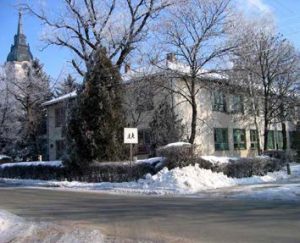Tomaševac is a town of Zrenjanin in the Central Banat District. According to the 2011 census there were 1510 inhabitants.
Every year, the world championship in Banat shores is held in the village. Here is a temple dedicated to the transfer of musti or “summer Sv. Nikola “, the Serbian Orthodox Church of St. Nicholas in Tomasevac. There have always been two parishes in every part of the village, with at least two priests.
Name
The older name of the settlement was Tomaševci, in the plural, probably because the village was not dried up, and the houses like the farm were scattered. Tomaševac is connected with the villages Tomaševci, Čoke, Marijevo selo and Tomaševac. After one surrender, on the site of today’s village, the first stamp was hit by a certain Tamasha Lak, and in time, the village that was formed there was named after him. Still it is considered that the village was named after the Tamis. The names of the villages in other languages: mađ. Tamáslaka, nem. Tomaschewatz. As on some old foreign maps the village is also called “Tomasevicz”, the possibility that the name may have been given to some medieval ruler Tomasevic might also be taken into account.

The first settlement dates back to the 16th century, on the left, lower bank of the Tamis River. Along the village, for centuries Tamiš was bordered by a wooden bridge called the ” jump. At the time of the Ottoman rule (16-18th century), Tomasevci were mentioned as a village inhabited by Serbs. In 1554 Tomaševac is a village in Čakovačka nahija and has 18 homes, and in 1568 it has grown to as many as 57 houses. Banat was densely populated then and it was called “Little Raska”, according to the Serbs who dominated. In 1660, the patuarians of the Peja patriarchy recorded 12 more in the village of Tomaševci, while in the neighboring town of Čoke there were seven. After the Pozarevac Peace of 1718, with which the Turks left Banat, the settlement became part of the Habsburg Monarchy, or the Tamis Banat. In 1717 Tomaševac was first recorded on the Austrian map as a place of 20 houses under the name Tomašović. However, the village was displaced between 1723 and 1725 and is again referred to as a Serb village in the mid-18th century. The new village was formed by the merging of two smaller settlements, Komorowski Choke (Tomaševac) and the border town of Marijevo (Marijino Selo), as these two half villages are still known today. Two settlements were administratively connected in 1776. In the sixties of the 18th century, Tomaševac became a part of the Military Border, it is the headquarters of the Company (company) and beside Tomaševac, as part of the subordinate station (lines) Botoš and Orlovat. The Serbs from the Tisza and Moris areas, who enter the border service of the Austrian monarchy, are also immigrating to the militant village.
During the First World War, the majority of Tomaševans fought in the Austro-Hungarian army on the front lines in Dobrudja. Many of them deserted and joined the Russian army, or as volunteers to the Serbian army. The monument to the fallen warriors of the First World War is located in the center of the whole. In the period between the two wars, Tomasevac got everything that one village had to have. At that time, the municipal building was built and today’s meat office, and in the six-year elementary school, the students attended classes in the Serbian language. On the eve of the Second World War, Tomasevac had about 2,700 inhabitants, mostly of Serbian nationality, who were predominantly engaged in individual agriculture.
